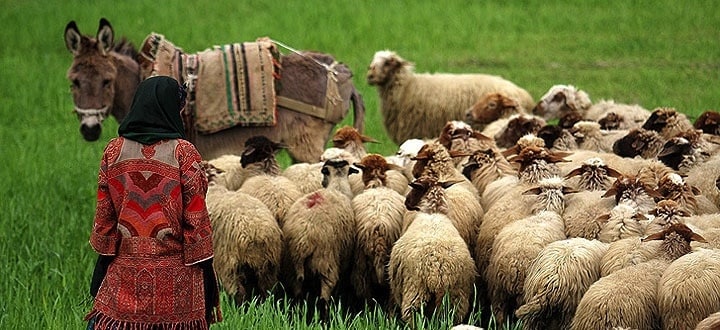True Green, A Conversation

A few years back a colleague pointed out the amazing value of the sheep to the oriental rug industry. He remembered having gone to the countryside for a picnic with his grandfather.
“Look at those sheep, ” his grandfather remarked upon spotting a herd. “They are truly precious animals. They provide wool for rugs and, through the wool, make a chain of jobs for so many people.” He walked closer to the animals and explained further, “A person shears the wool, then someone cards it and someone else spins it into yarn, while yet another person dyes the yarn and a weaver weaves it into a rug. Then, someone shears and clips the rug after which another worker washes it and many more will finish the rug, making fringes and tassels.”
Following his grandfather’s lead, my friend interjected, “The rug hits the local market, a merchant buys it in the bazaar and sends it to another merchant in Europe and, there, it is sold to an individual, who uses it in his or her home for a number of years.”
“Precisely,” said his grandfather. “It may change hands several times or it may remain in one family for eighty years when it becomes even more valuable. Worn but with a pleasant patina, its value increased and its uniqueness more sought after. So far many people have benefited from the sheep’s generous contribution.”
“Years have gone by and the sheep has departed for the eternal world and yet, the rug survives and it has metamorphosed into many lives,” my friend added.
His grandfather nodded in approval, “Once a brand new rug but not to the liking of the market, it could have received a hand coloring or a strong wash or a sun fading to become more appealing. After thirty years, through the natural aging process, it becomes another rug all together. It may go out of fashion and be back in vogue within a decade, but it always keeps the memory of the sheep alive.”
In this brief, poetic exchange, we come to understand how relevant rug manufacturing is to our times. The traditional methods it employs – the use of natural dyes and hand spun yarn– keep an ancient craft alive while creating job opportunities for millions of people with no cost to our environment. In this way, the handmade rug remains one of the truest expressions of sustainable economics and green living.
For those of us who share these principles, a handmade rug is much more than a floor covering. It’s part and parcel of a much larger, centuries-old way of life, profession, and trade. In short it deserves our support.
